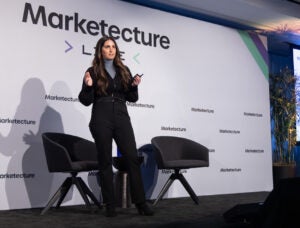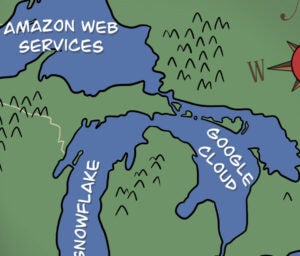 “Data-Driven Thinking” is written by members of the media community and contains fresh ideas on the digital revolution in media.
“Data-Driven Thinking” is written by members of the media community and contains fresh ideas on the digital revolution in media.
Today’s column is written by Ezra Pierce, CEO at Avocet.
The ultimate value of viewability is in understanding causation, not targeting.
That’s not hair-splitting. It’s a distinction with consequences that we’re already experiencing. When viewability is targeted, it’s implicitly identified with quality, with which viewability has nothing to do. That misidentification creates new inefficiencies and distortions in the ad market.
Viewable targeting doesn’t and can’t capture the difference between an ad “connecting” or “cluttering,” and because of that, it tends to produce the latter. Buyers get more of what they pay for (or target). By inflating the exchange value of viewable inventory, targeting creates an incentive for publishers to push more units above the fold.
Ironically, these attempts are self-defeating for both the publisher and the advertiser: Users become accustomed to quickly scrolling down the page, page loads are slowed and page aesthetics are impacted. The effect of viewable marketplaces and viewable targeting is likely to be a decrease in inventory quality because it’s easier and more profitable to increase viewability in ways that decrease quality. Viewability as quality produces its opposite: viewability as clutter. There are threads of connection between the rise of ad blockers and the rise of viewability as a targeting paradigm.
That’s a strong claim, but ultimately advertising is about engagement, and while viewability is necessary to engagement, it isn’t remotely sufficient. While it’s true that you can only engage with the ads you see, once an ad is in view it doesn’t matter if the viewability rate was 15% or 95%.
What happens next is a function of the gestalt created by the content and the advertisement. If it works, we call that quality. The ability of a placement or domain to do its work – connecting a user to a message – is represented well by viewable attribution and poorly by viewability rates.
That leaves us with the constructive question: How should viewability be deployed if not through targeting? This takes us back to the purpose of advertising – changing behavior. We can use viewability to come to a more nuanced and fundamental understanding of which media is really driving engagement. The obvious implementation is, of course, to include viewability in our conversion attribution models. No view, no conversion.
That’s a positive first step, but it doesn’t altogether avoid rewarding clutter. What’s needed is a measurement that straightforwardly answers the question: “How likely is this ad to engage the user?” That is not the likelihood that the ad is simply “seen” – raw sense stimuli – but the likelihood that it can reach the foreground of perception.
What’s needed doesn’t exist yet in any programmatic platform, so let’s call our new metric “share of view.” The core elements would be the viewability rate and the percentage of advertising surface area taken by an ad. It would draw a line of demarcation between a “good” view and a “cluttered” view, and correct the perverse incentives the buy side is currently creating for publishers. Interestingly, it opens up the possibility of financial models more in line with old-fashioned “share of voice.” Further, it provides an intellectually respectable next step for attribution modeling after viewable post-view: Attribute to the last viewed ad with the highest share of view.
Targeting viewability isn’t “bad” – it’s a workaround for the lack of a better solution. Publishers aren’t “bad” for increasing their above-the-fold inventory. Publishers, especially the smaller ones that rely on programmatic revenue, don’t have the option of waiting for smarter buyers. That puts the onus on the buy side.
Viewable attribution and share of view are things we can do now, easily, that will improve the ad tech ecosystem for everyone at the table – the user, the publisher and the advertiser.
Follow Avocet (@AvocetHQ) and AdExchanger (@adexchanger) on Twitter.












